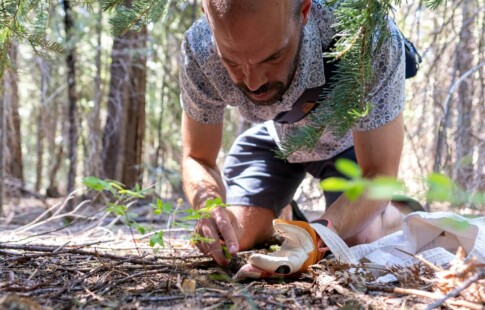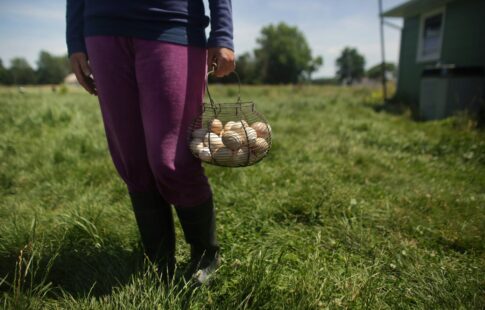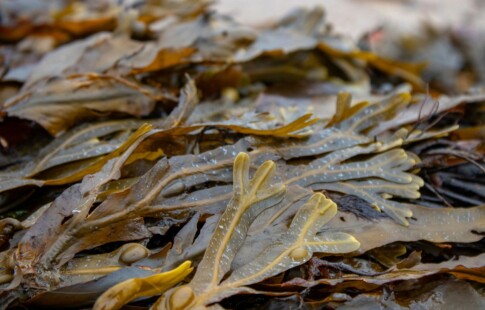
5 Sustainable Gardening Ideas to Try Next Season
We are reader-supported. When you buy through links on our site, we may earn affiliate commission.
Many people look forward to warmer months when they can head outdoors and grow their gardens. For some, gardening is a passion in which they spend hours nurturing, maintaining, and harvesting produce and flowers in their backyards. Here are some sustainable gardening ideas to get you started.
What Is Sustainable Gardening?
While there is no exact definition, sustainable gardening uses resources more thoughtfully and avoids strategies that cause harm to the surrounding environment, habitats, and wildlife.
Although you’re certainly adding nature to an existing landscape, gardening isn’t always as eco-friendly as it seems. In fact, there are several ways gardening can wreak havoc on the environment, from applying harmful chemicals to overusing water resources and even planting the wrong species.
With increasing awareness about critical environmental issues, you may be wondering how you might garden more sustainably this year. Thankfully, building a sustainable garden is relatively simple.
Consider the term “organic” when venturing into sustainable gardening. Your aim should be to approach gardening with fewer chemicals and adopt alternatives to traditional materials, supplies, and techniques.
Essentially, whatever gardeners choose to do when cultivating their gardens should utilize low-impact practices that enhance a potentially fragile ecosystem.
5 Tips For Creating a Sustainable Garden
Whether you’re a master gardener or just starting to learn, these five sustainable gardening ideas can help you make your existing garden more eco-friendly.
1. Select Your Plants Carefully
One of the first steps to planting a sustainable garden is to choose native plants that are well-adapted to your area.
According to the National Wildlife Federation (NWF), native plants construct symbiotic relationships over thousands of years with the region’s climate, matching the soil, moisture, and weather conditions to thrive.
Their deep roots control rainwater run-off and prevent soil compaction, meaning they require less irrigation and have fewer pest infestations and growth problems.
Gardening with native plants also benefits backyard wildlife. Insects play an integral role in ecological health by enabling pollination and seed dispersal, further enhancing nutrients for soil fertility, keeping other insect populations in check, and providing a source of food for larger species.
Since about 90% of insects feed on native plants, gardening with invasive species significantly reduces insect populations and diversity. Additionally, birds and amphibians that eat insects for reproductive and survival purposes disappear.
If you’re unsure how to select native plants for your geography, you can search the plant database on the U.S. Department of Agriculture’s (USDA) website.
2. Irrigate Responsibly
The average household wastes approximately 9,400 gallons of water per year, with outdoor water consumption accounting for 30% to 60% depending on how dry your area is.
Suggestions for irrigating your garden more responsibly include the following:
- Maintaining soil structure with organic matter
- Scheduling water times and frequency
- Integrating automated irrigation systems using a timer
- Using the right amounts of water based on the soil and plants you grow
A rain barrel is another way to garden sustainably this summer. Rain barrels can save you upwards of 1,300 gallons of water annually, which you can use for your garden during extreme summer temperatures.
Collect rainwater by redirecting water flow from your roof’s drain pipe to the barrel. Greywater — water waste from sinks, washing machines, bathrooms, and tubs — can also be re-routed. Typically, greywater containing natural soaps and detergents is harmless; however, make sure the water is free from bleach and other toxic disinfectants that can hurt your plants and the soil.
3. Recycle and Reuse Materials and Supplies
The United States has a serious waste problem. According to the U.S. Environmental Protection Agency (EPA), Americans landfilled 146.1 million tons of solid waste in 2018, of which plastics and paper accounted for 18% and 12%, respectively.
Recycling materials and supplies are essential to sustainable gardening and prevents further waste accumulation. Reusing items may also save you time and money from making unnecessary purchases at a garden center. The following recycling techniques can help you get started:
- Shred newspapers or collect fallen leaves on your property to create mulch.
- Grow indoor seedlings and herbs in cardboard egg cartons.
- Insert cardboard under the soil surface between rows of plants to discourage weeds.
- Use empty plastic water jugs and bottles if you don’t own a watering can.
Although recycling materials, supplies, and rainwater is a great way to create a more environmentally-friendly garden, it does take a bit of effort and patience to get started.
4. Compost Food and Garden Waste
A previous study by the National Waste and Recycling Association found that 72% of Americans do not compost, citing a lack of understanding about its benefits and what is actually compostable.
Yet, learning how to compost food waste and yard trimmings is an excellent way to turn organic materials into a rich, natural fertilizer for your garden. Compost reduces the need for toxic chemicals, decreases landfill waste, and improves nutrient and moisture retention in the soil.
Before you toss out weeds, leaves, and leftovers — including meat scraps — place them in a compost bin you can build yourself and allow it to cure for one month or longer, depending on the size of the organic matter.
Keep in mind that sometimes the process takes longer. For example, orange rinds could take six months to cure while bananas could take up to two years. However, whenever your compost is dark and easily broken up, you can begin adding it to your garden.
5. Use Fewer Pesticides and Fertilizers
Of all the helpful sustainable gardening ideas, decreasing your use of pesticides and fertilizers may have the most significant ecological impact.
While pesticides and fertilizers work to prevent pest infestations and promote plant growth, these synthetic products damage the environment. For example, bees and other pollinators are vital to agricultural ecosystems — but research has long pointed to the negative impacts of pesticides on bee populations.
A more recent study found that pesticide exposure also stunts pollinator reproduction. Female bees exposed to pesticides in the larvae stage showed a 20% decrease in offspring, while adult bee exposure led to 44% fewer offspring.
Pollinators are essential for seed dispersal and propagation, promoting plant maturation and higher crop yields of fruits, vegetables, and grains. In fact, approximately 80% of the 1,400 crops grown worldwide require pollination.
However, sustainable gardens are still susceptible to pests, such as aphids and mites. Thankfully, an easy, homemade solution consisting of 2 teaspoons of dish soap and one pint of water can rid your garden of pesty bugs without harming the plants.
Start Small for a More Sustainable Garden
As you dig your gardening gloves and shovels out of the shed, begin thinking of ways you can implement these sustainable gardening ideas into your outdoor project. Even using just one of these tips can improve the eco-friendliness of your garden.
Share on
Like what you read? Join other Environment.co readers!
Get the latest updates on our planet by subscribing to the Environment.co newsletter!
About the author

Steve Russell
Steve is the Managing Editor of Environment.co and regularly contributes articles related to wildlife, biodiversity, and recycling. His passions include wildlife photography and bird watching.





